10 Pickup Trucks That Didn’t Quite Make the Cut
Understanding why some pickup trucks struggled in the marketplace requires a look at the qualities of a successful pickup – and what these models lacked. Traditional pickups, built with a body-on-frame design featuring a cab and bed attached to a ladder frame, offered ruggedness, ease of body panel repair, and the ability to handle high-torque tasks, like towing heavy loads. Many of today’s workhorse pickups still use this design. Pickups also offer the versatility of an open bed, safety advantages thanks to their size and ride height, and generally higher ground clearance than most passenger cars, which is ideal for both work sites and off-road use.
Many of the trucks on this list fell short in one or more of these areas, and sometimes in all of them. Some were based on passenger cars, which could create either a stylish, sporty pickup that was easy to drive and park or, alternatively, a more versatile car with a pickup-style bed. However, these car-based models didn’t excel at both. Others were tiny and lacked the safety advantages trucks can offer in terms of size, weight, and a better view of the road. Some were completely out of their element on anything other than a paved road, and some were just too peculiar for their time. Some of these pickups were decent vehicles for their intended niche, but that niche was simply too small for strong sales.
At least one model started with good sales but fizzled following a redesign. Others just missed the mark, getting left behind by shifting market preferences. Exact sales figures can be hard to find, especially for older models, so this list is presented in approximate chronological order instead of by sales volume.
1957-1965 Jeep FC (Forward Control)
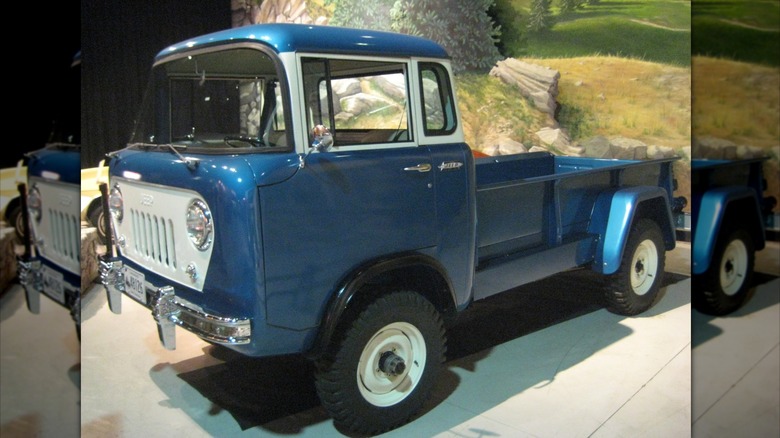
Willys Overland attempted to boost declining sales with the Jeep FC Forward Control. This cab-forward pickup was highly unconventional yet also very practical. This design placed the seats above the front wheels, creating a flat-front vehicle akin to a miniature cab-over semi-truck. The design, while not catching on with civilian drivers, found more favor with the military and ultimately influenced trucks like the Ford Econoline pickup, which emerged a few years later. The Jeep pickup was available as the FC-150 (short-wheelbase) and FC-170 (long-wheelbase). There were also military-only versions that included wagon-bodied models, suitable for use as ambulances or panel trucks.
The FC-150 was powered by the classic Jeep CJ’s 72-horsepower “F-head” four-cylinder engine, producing 115 lb-ft of torque. For heavier-duty applications, the FC-170 came with a 105-horsepower inline-six engine that generated a respectable 190 lb-ft of torque. The FC-170 also featured wider axles and offered a dual-rear-wheel option. Equipped with the optional T-98 four-speed transmission and dual rear wheels, the FC-170 had a gross vehicle weight of 9,000 pounds. All models came standard with four-wheel drive.
Launched with initial fanfare, sales of the new truck never truly took off. The FC had its weaknesses. The cabin could be very noisy. The cab-forward design made them nose-heavy, and drivers justifiably feared tipping over on steep downhill stretches. This was mitigated with added weight in the rear. The FC was discontinued after eight years but became a sought-after collectible, particularly its rarest military versions.
1960-1964 Studebaker Champ
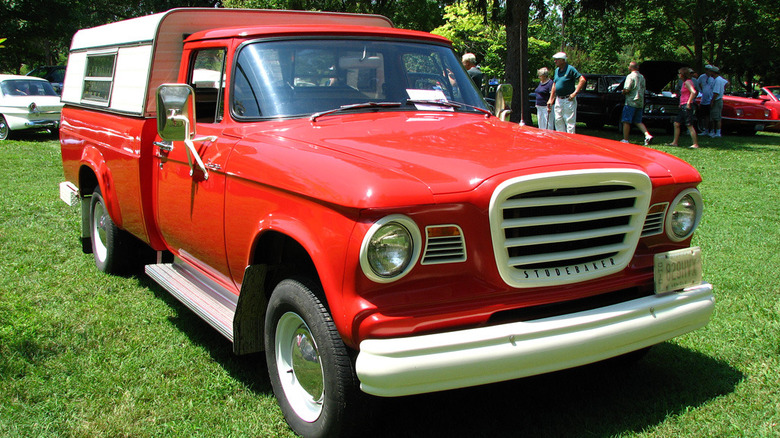
Towards the end of its long history, the Studebaker Corporation was better known for its unconventionally beautiful cars, like the bullet-nosed Starlight coupe. However, the company had a history of building military and commercial trucks. In 1949, they introduced a pickup truck that was outdated a decade later, necessitating a new model. Borrowing a shortened version of the name of the company’s long-running Champion sedan, the new truck was dubbed the Champ.
The Champ borrowed the front half of a car, the roughly mid-sized Studebaker Lark sedan, which made it an early example of a car-based truck. The Lark’s body was installed onto the chassis of the previous-generation Studebaker pickup to create a sort of new model. The Champ got a new pickup box in 1961, but since Studebaker was struggling financially at the time, they bought these truck beds from Dodge. This wasn’t the most compatible pairing, as the Dodge back ends were noticeably wider than the Studebaker front ends. Still, the Champ’s designers made the best of things by calling it the “Spaceside” bed. This awkward design reflected—and perhaps contributed to—the Champ’s overlooked spot in pickup truck history.
For its debut year, the Champ offered a range of six-cylinder and eight-cylinder engines, including 259 and 289 V8s. In 1961, its base V6 received an OHV head, which boosted horsepower from 90 to 112, but it quickly earned a reputation for unreliability. The Champ’s introduction briefly boosted sales, but its outdated chassis and unreliable reputation quickly caused those sales to decline. Production of the Champ only lasted until 1964, and what happened to this ungainly pickup mirrored the fate of Studebaker automobiles in general two years later, when the company went out of business.
1961-1967 Ford Econoline Pickup
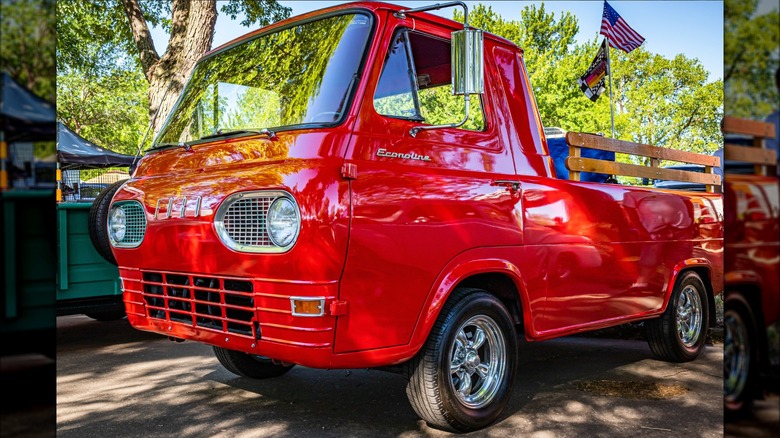
In the early 1960s, Ford’s Econoline platform was meant to be a versatile foundation for a work van, a passenger van—and an oddly configured forward-control pickup. Its snub-nosed appearance drew inspiration from the Jeep FC Forward Control and the Volkswagen van.
With much of its weight ahead of the front axle, these trucks looked like they could tip over—and indeed, they sometimes did. A vintage advertisement for the rival Chevy Corvair pickup (which was also a forward-control truck) showed the Econoline tipping onto its front bumper under hard braking. (Since it’s a Chevy ad, the video should be taken with a grain of salt.)
This ad’s existence highlights that forward-control pickups like the Econoline, the Corvair, the Jeep FC, and the Dodge A100 had their moment. Today, they have a certain retro-cool Jet Age factor, and indeed, we included the Econoline pickup as among our best Ford truck designs of all time. With an extra 165 pounds of weight over the rear axle to counteract its forward tipsiness, the Econoline pickup was a decent truck.
The Econoline was considered a mid-engine model because the engine was between the seats, unlike its Chevy rival, which was rear-engine. This gave it the advantage of a flat load floor along the entire length of its 7.5-foot bed. On the downside, it never offered a V8 model, being powered instead by a choice of straight-six engines. Good fuel efficiency made it a favorite of some fleet customers, but sales to individual buyers never took off. After selling only 2,000 Econoline pickups in 1967, Ford canceled the model.
1974-1977 Mazda Rotary Engine Pickup
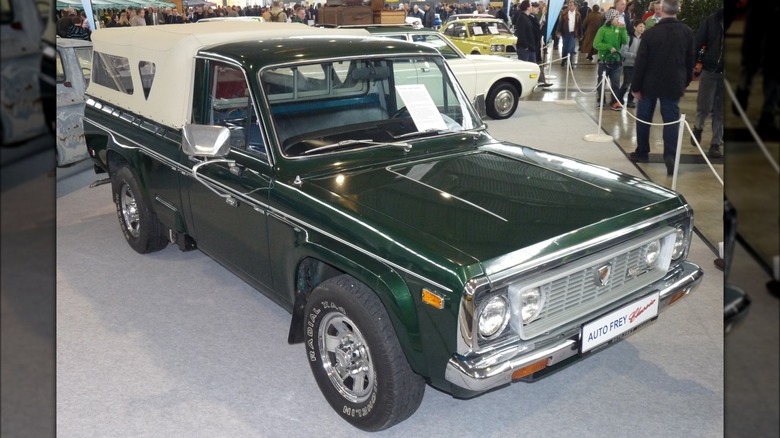
Mazda’s REPU, or Rotary Engine Pickup, sought to bring Mazda’s iconic rotary engine technology to the small pickup game. It never caught on, and only 15,000 examples of this rugged little pickup were sold in the USA, earning it a spot on our list of the rarest pickup trucks ever built. Still, it remains a favorite of Mazda fans a half-century later, especially on the West Coast.
The REPU staked its claim to being the only rotary-engine pickup truck in history with its 1.3-liter, 4-port engine with a four-barrel carb. Mazda’s engine technology, often called the Wankel engine after its inventor, Felix Wankel, differed from piston engines in its fundamental architecture. Piston engines feature pistons that move up and down in a reciprocating fashion inside banks of cylinders, driven by a sequence of compression and ignition. The Wankel rotary engine, in comparison, has a triangular rotor that spins continuously inside its combustion chamber while fuel is injected through ports in the housing and ignited to push the rotor. This offers continuous power delivery without the energy that piston engines lose on the upward compression stroke.
Reviews at the time said that the REPU produced decent power with smooth delivery. It also was a handsome truck with squared-off fender flares that matched its boxy, well-proportioned body. Unfortunately, it was just too different for mainstream acceptance, and Mazda soon discontinued it.
1977-1988 Subaru BRAT
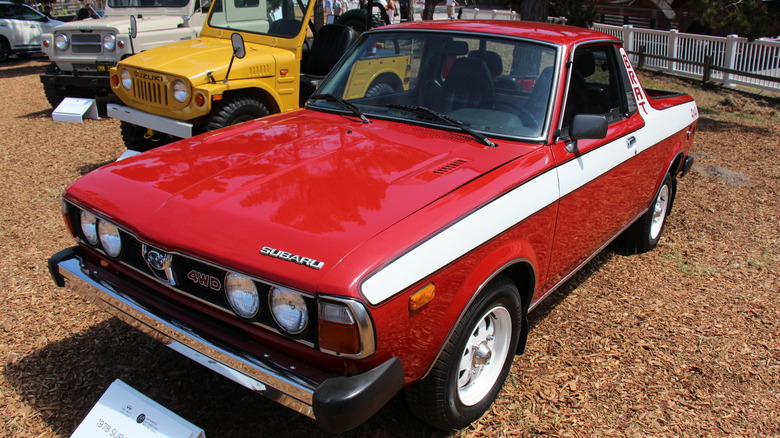
Subaru’s cute and quirky BRAT micro-pickup is an example of a vehicle whose fame was out of proportion to its tiny sales figures, which peaked at around 23,000 for two years before plummeting. By its last year, only 12 units sold in the USA, prompting Subaru to discontinue the pickup. Yet, it remains a favorite in the memories of many enthusiasts.
The BRAT was car-based, sharing a platform with the Subaru Leone station wagon, but it aspired to be a true off-roader. Its name was allegedly an acronym for “Bi-drive Recreational All-terrain Transporter.” Its cult-classic status makes it highly collectible, and you might be surprised at what a BRAT is worth today, with auction results reaching as high as $20,000.
One of the BRAT’s most unique features is the pair of rear-facing seats in the bed, with their backs up against the back of the cab. This allowed Subaru to claim that the BRAT was a passenger car rather than a pickup truck, thus avoiding the 25% tariff known as the “chicken tax” that Uncle Sam imposed on imported pickups. This is unclear about whether the BRAT is actually a truck; the tax man says no, but if you take away the seats, he would say yes. Of course, exterior seats would never fly in today’s hyper-safety-conscious era. The late 70s and 80s were a different time, man. The BRAT had other tricks up its sleeve. There was a hidden side step into the bed, and the spare tire was under the hood behind the engine. Four-wheel drive was standard, of course. Among the fans of this rugged little trucklet was President Ronald Reagan.
1978-1987 GMC Caballero
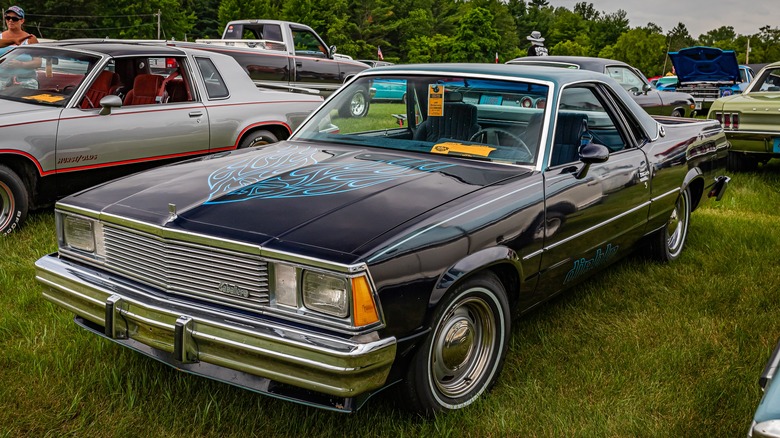
Next up is another car-truck, the GMC Caballero. The Caballero, a vehicle that pretends to such refinement that even its name means “Gentleman,” is the less well-known sibling of the Chevy El Camino. The Caballero’s rowdier Chevy twin, the El Camino, is so well-known that it even got a Breaking Bad movie named after it, while the statelier GMC Caballero has been all but forgotten. The two vehicles looked so similar that a casual observer might mistake a Caballero for an El Camino, which only added to the Caballero’s anonymity.
The Caballero was the successor to the GMC Sprint, which shared its body with the fourth-generation El Camino. Upon the introduction of the Malibu-based fifth generation of this platform in 1977, GMC changed the name to the more polished-sounding Caballero, in keeping with GMC’s market strategy of selling more upscale versions of the trucks it shared with Chevy. “Caballero” certainly sounds much more like a vehicle whose keys you’d hand to the valet at the country club than “Sprint.” Caballeros were powered by a range of V6 and V8 engines over the model’s surprisingly long run. By 1987, its last year in production, it offered a fuel-injected V6 or a four-barrel, 5.0-liter V8 producing 150 horsepower and a decent 240 pound-feet of torque. While the Caballero could haul 1,250 pounds in a bed roughly the same size as contemporary compact pickups, the bed rails were 2 inches lower than those of a S-15 compact truck. This is an example of the kind of compromise that made the Caballero a less-than-ideal pickup. The muddled marketing is likely what led GMC to only sell a few thousand Caballeros per year.
1981-1982 Chevy LUV
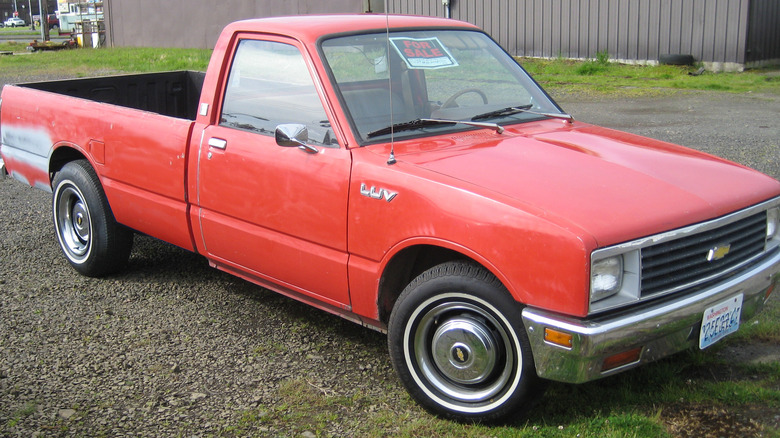
Seeing this little truck on a list of poor-selling pickups might come as a surprise. The LUV seemed to be everywhere in the 1970s. However, sales of the second-generation LUV, introduced in 1981, plummeted over the next two years. In the early 1970s saw the rising popularity of small, imported pickups from manufacturers like Toyota and Nissan (then called Datsun), and American carmakers were eager to get into that market. Since Chevy didn’t have a platform ready to adapt into a small truck, it adopted the strategy of “if you can’t beat ’em, join ’em.” It partnered with Isuzu to introduce a version of Isuzu’s Faster that Chevy called the Light Utility Vehicle, or LUV.
The original generation of the LUV sold quite well between 1972 and 1980, with sales peaking at just over 100,000 in 1979—a respectable number for a compact pickup in that era. However, the LUV is on this list because after 1979, things declined. Sales began to slide with the last year of the first-generation LUV in 1980. After a less appealing redesign in 1981, sales went into a freefall. The 1981 model sold about 61,000 units and only 22,000 LUVs in 1982. What happened? Chevy debuted its home-grown S-10 compact pickup during the 1981 calendar year, attracting many truck buyers away from the outdated LUV. Isuzu also introduced its own version of the LUV to the US market, dubbing it the P’up. The LUV lost its market and its mission, and Chevy quietly canceled it after the 1982 model year. Today it’s a classic mini-truck that we wish Chevy would bring back.
1982-1984 Dodge Rampage
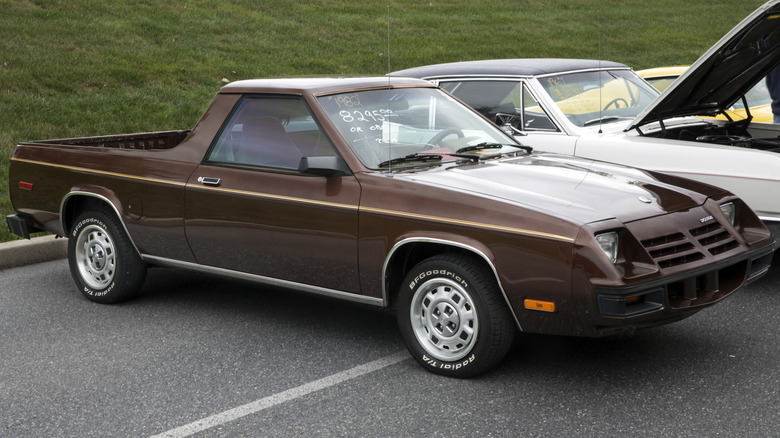
The Dodge Rampage and its Plymouth twin, the Scamp, were built to capture some of the car-based truck crowd that bought Chevy El Caminos and Ford Rancheros. But the Dodge never rampaged through the sales charts during its short three-year run. Production topped out at 17,636 units during its first year before settling down to about 10,000 sales on average in its final two years. The Plymouth Scamp only joined the Rampage for a single year of production in 1983. This duo of unibody trucklets faded into history as part of the trend for car-based trucks that peaked in the early to mid-1980s.
The Rampage was among the genre’s smaller examples, being longer than a Subaru BRAT but a full foot and a half shorter than an El Camino, weighing only 2,300 pounds. It shared Chrysler’s L platform with compact cars like the Dodge Omni. Power came from an uninspiring 2.2-liter, non-fuel-injected, inline four-cylinder engine that produced between 84 and 99 horsepower, depending on the model year. Unlike similar trucks like the Subaru BRAT that are worth a mint to collectors, the Rampage’s value today is only about $4,375 for a good-condition 1984 model.
1989-1991 Dodge Dakota Sport Convertible
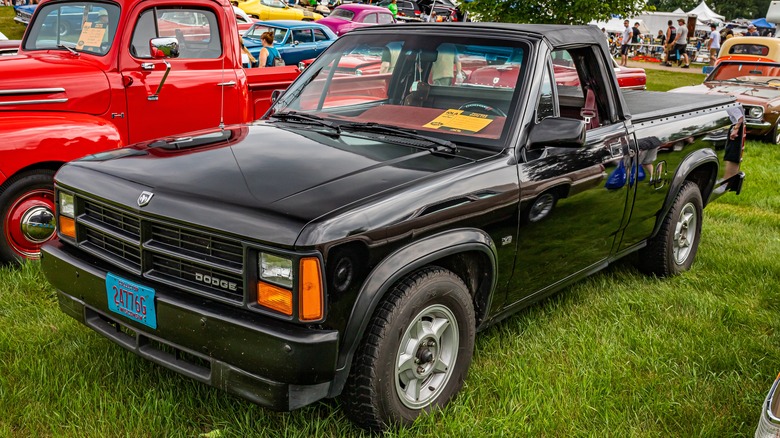
The idea of taking one of your most popular models and building a convertible version has been a sound product strategy for almost as long as there have been automobiles—unless the vehicle in question is a pickup truck. Non-aftermarket pickup models are rare. Dodge tried to buck conventional wisdom with the now-rare Dakota Sport convertible, but it never caught on with buyers, leading to an abbreviated three-year run.
On paper, the regular-roofed Dakota pickup truck introduced by Dodge in 1987 had all the ingredients to be a winner, but it never quite found its footing against rivals like the Chevy S-10 and the Ford Ranger. Thus, Dodge decided to do something different, chopping the roof off and replacing it with a convertible soft top. The Dakota Sport convertible certainly turned heads and arguably paved the way for future convertible truck models such as the 2003-2006 Chevy SSR convertible truck and the 2020-onward Jeep Gladiator. Car enthusiasts can applaud Dodge’s boldness in creating one of history’s most unique vehicles.
Dodge partnered with the well-known American Sunroof Corporation (ASC) to create this unusual beast. Power came from a 125-horsepower, 3.9-liter V6 with a choice of manual or automatic transmission. Four-wheel drive was optional. Total sales were 2,842 in 1989, 909 in 1990, and a mere eight in 1991 before production was discontinued.
1991 Ford SkyRanger
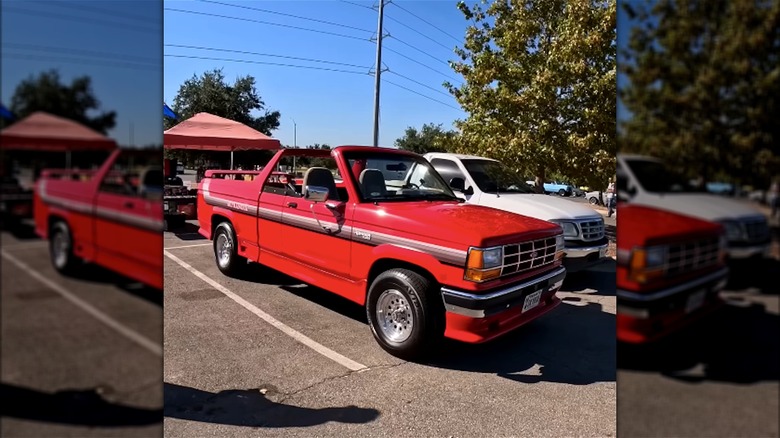
If the Dakota Sport convertible is rare, the odd-looking SkyRanger is one of the rarest trucks ever made. Apparently, someone at Ford looked at the Dakota Sport and thought, “We need a convertible pickup truck, too.”. While the SkyRanger technically never went into production, enough of them were built and found their way into private hands that they occasionally pop up at car shows and in sale listings. If you’re lucky enough to find one for sale. expect to pay between $10,000 and $25,000.
The SkyRanger appears to have been built for Ford by a now-defunct outfit called Autocrafters. The SkyRanger isn’t a bad build. The convertible top drops completely down into the space behind the seats in the extra-cab Ranger that it’s based on. Rather than a clumsy roll bar, it has a nifty body-colored buttress called a “targa surround” that slopes down into a sort of rail along the upper edge of the bed and ends in a spoiler. A GTS version featured body-colored aero add-ons on the lower part of the truck. The base Elite model, lacking add-ons, is arguably a cleaner and more attractive design.



